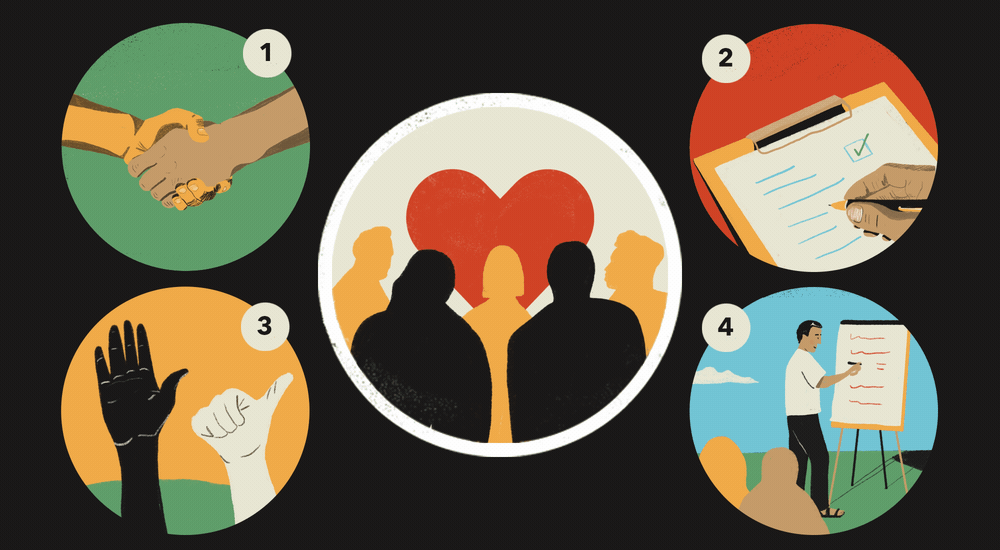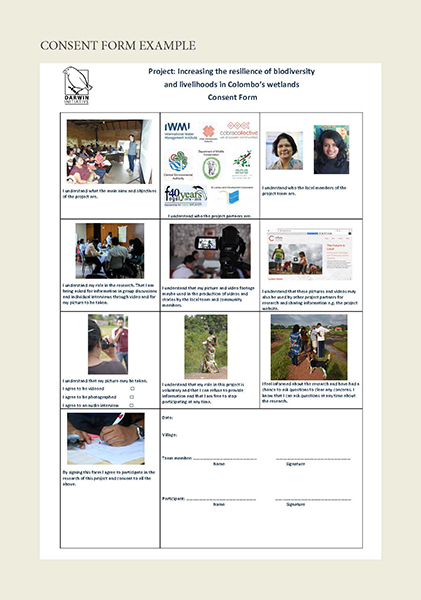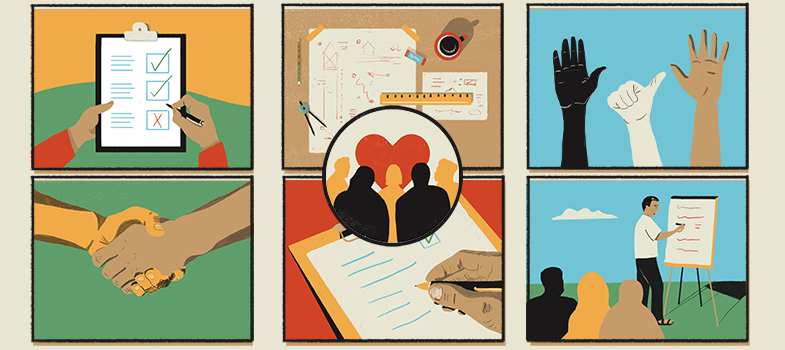Community Engagement
2. Community Engagement

1. Selecting and getting to know the community members
The exact type of engagement is discussed in more detail in later units but most engagement starts with a community meeting or engagement where you set out what type of engagement is planned. It is therefore important to state what is required for participation prior to community engagement.
You can use criteria to select the most appropriate people to be involved, such as prior experience of community engagement, particular language skills, IT skills, gender or age. Language is particularly important, so you need to have a good translator if you do not speak all the local languages or dialects. Seek as wide a representation of the community as possible. It is a good idea to explicitly identify and distinguish specific groups in terms of age (elderly, youth), gender, origin (ethnic, location), social status, religion, employment, and community involvement.
Once participants have come forward, you will need to get to know them. Use the questions below to facilitate this:
Questions to ask community members before getting started:
- What is your name?
- Where do you come from?
- What skills and experiences do you have?
- What do you want/expect to get out of the engagement?
- What are your interests?
- What is your age?
- What languages/dialects do you speak?
2. What are the potential issues that might be encountered? Ethical considerations
Ethics refers to reasonable and well-founded standards of equity, positive attitude, anonymity and consent that provide guidelines for what we do in terms of rights, obligations, benefits to society and fairness. Ethics is an integral part of community engagement. In a way, ethics is a list of behaviours and processes that should be followed to try to avoid any negative impacts that community engagement might have.
The following are some ethical guidelines:
- Participation – Some people may feel a barrier to engaging with you so use different participatory techniques to make them feel comfortable (more detail in Course 2).
- Do not raise expectations – Ensure that the objectives of the engagement are fully understood by the community members and that no false expectations are built.
- Consent – It is important that all community members are asked for their consent before any video or photographic material is taken. An Informed Consent form can be used to gain this agreement

- Ownership – Prior to starting, ownership of the data should be made very clear. Who owns the data and where is it accessible (storage location) is important to establish. In most cases, this will be a community, represented by a village council/community-based organisation. Note that any sensitive personal data must not be identified by names. Be clear that all publicly available materials will be licensed under the Creative Commons “Attribution Non-Commercial No Derivatives” licence (CC BY-NC-ND). This implies that any distribution of original material will need to be attributed to the original authors, the material will not be allowed to be used for commercial purposes, and if the material is remixed, transformed or built upon it cannot be distributed as such.
- Permits – Make sure all the appropriate permits have been obtained prior to starting the engagement. This will normally involve a prior consultation with the community and written consent from them before the engagement is approved in compliance with the right to Free, Prior and Informed Consent (FPIC), as stated in the international regime on collective indigenous rights http://www.fao.org/indigenous-peoples/our-pillars/fpic/en/
- Payment for involvement – Be clear that community members will not get direct payment for their involvement.
- Participants younger than 18 years – It should be acknowledged that children and youth may be present during engagement. Any engagement with children and youth should be done in the presence of one or more community adults and with prior consent of parents/elders, and under the same consent and data ownership guidelines as described above.
3. Making it fun and engaging!
One of the most important aspects of community engagement is that it should be fun and engaging rather than boring and formal. Based on experience, we know that numerous approaches and techniques used in this course not only stimulate thinking, creativity and discussion, they are also fun to do and can generate a lot of laughter and a ‘feel good’ atmosphere in the participants. To achieve this, many games can be sprinkled throughout the engagement - these are called icebreakers and energisers. Icebreakers can help people to get to know each other at the start of a session, feel at ease and can be used to introduce the theme of the activity. Energisers are games that are meant to wake up community members, particularly at the start of sessions after lunch or after long periods of sitting and listening.
4. Feedback and evaluation
It is important to have regular feedback and evaluation during the engagement to make sure participants really understood what was carried out. It also offers a summary of what has been learnt on both sides. Lastly don’t forget to reflect on your own facilitation, on how you thought the activities went, identifying how and where things might need to be changed. It is also important that monitoring and evaluation continues throughout the whole community engagement to monitor progress and assess impact.
Now, after having finished this book, make sure to go back to the main page and complete activity 2.
